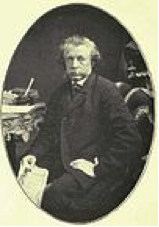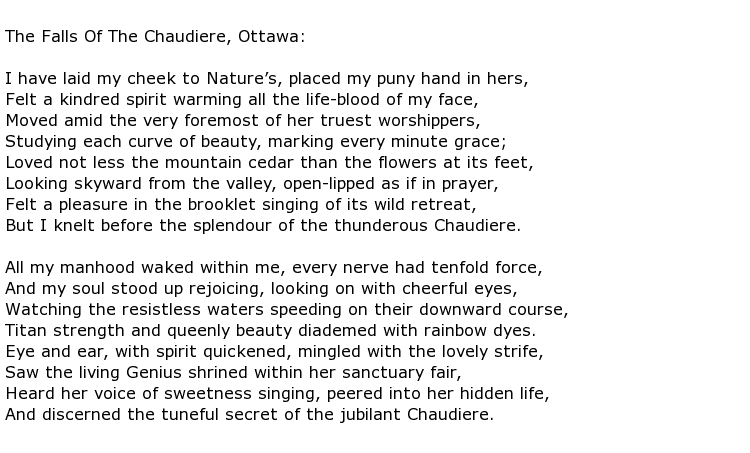 Charles Sangster was a 19th century Canadian poet and newspaper man who was described as
Charles Sangster was a 19th century Canadian poet and newspaper man who was described as

He was a man who was fiercely proud of his country and this showed in his poetry, especially his most famous work which was published in 1856 under the title

He was born on the 16th July 1822 at a British military base at Point Frederick, near Kingston,which was in Ontario. His father worked at the shipbuilding yard but died when Charles was barely two years old. This left his mother, Ann, to raise a family of five children alone. Perhaps Sangster was affected by a disrupted childhood and showed no interest in his schooling, describing the school curriculum as

He left at the age of 15, eager to make a financial contribution to his mother.
He readily found employment within Fort Henry, like his father before him, but he was more interested in ordnance than ship building. He soon began to write poetry and astonished those who read his first piece of serious work. In 1839 he wrote The Rebel which was an impressive narrative over 700 lines of rhyming couplets. Critics found it hard to believe that a boy with so little education behind him could write something that contained such

It just proved how observant he was and how capable of transferring what he saw to such a descriptive and expertly crafted piece of work.
Sangster toiled away at the Fort Henry Ordnance office for some twelve years but he was also a part time journalist with a newspaper – British Whig. Sangster used this, and other, publications to expose his poetry to an appreciative reading public. In 1849 he moved away, only briefly as it turned out, to edit another paper called, but soon returned to resume working on British Whig. The following year his poetry found a much wider audience when some of it appeared in the Literary Garland and others, such as the Anglo-American, picked up his work.
In 1853 came the opportunity to research what would become his most famous piece of work when he went on a steamship, travelling along the St. Lawrence and Saguenay rivers through the province of Quebec. His musings appeared in the Whig initially under the working title

but he soon collected them together for his epic poem

Sangster’s first published book of poetry was called

published in 1856. It received widespread and fulsome praise with fellow author Susanna Moodie being moved to write to him saying

A London publication described him as

Here is an example of his lyrical style, a poem portraying his clear love of the landscapes that he lived with. Reproduced below are the first two verses of a poem called

A second collection came out in 1860 called

and was even better received than his first one. Four years later saw publication of the first ever anthology of Canadian poets and Sangster had many of his poems included in

Unfortunately all of this literary acclaim did nothing for his financial status and he soon found himself in desperate straits, as well as suffering with ill health. He took a fairly menial job with the Post Office Department in Ottawa and remained there until his retirement in 1886. His poetic talent simply dried up, a result of the drudgery of his job. Despite having been elected a Fellow of the Royal Society of Canada his inspiration was gone.
There was a brief renaissance in his writing but it was short-lived. Charles Sangster died in Kingston on the 9th December 1893 at the age of 71.

